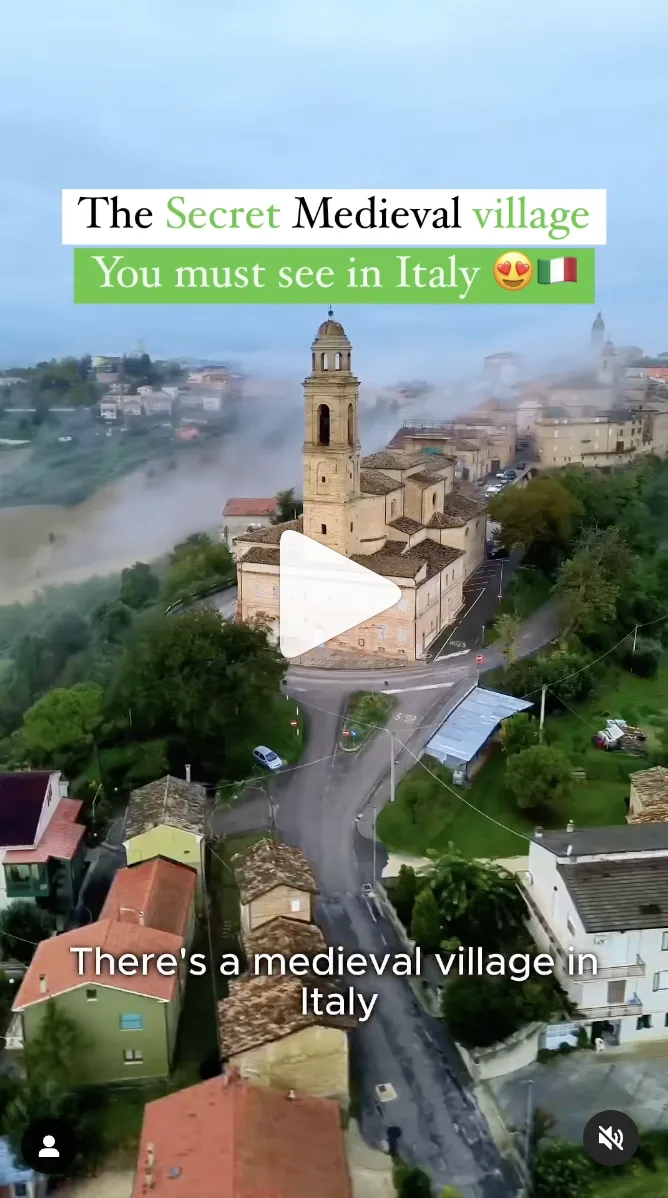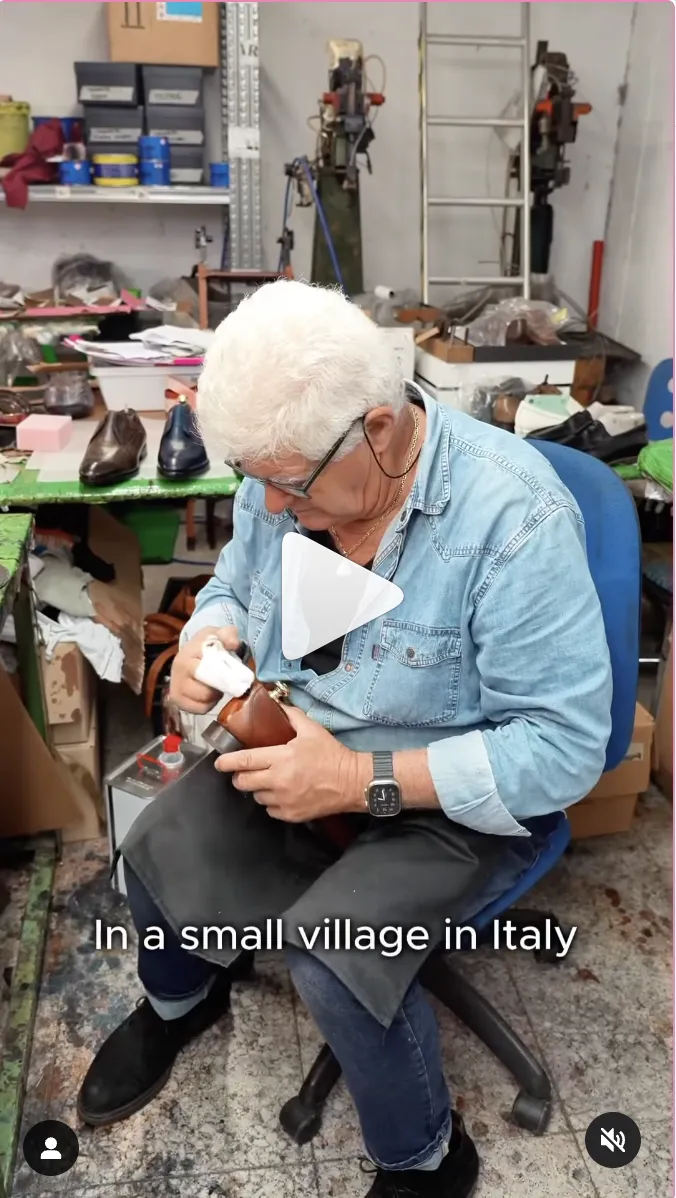Visiting Monte San Pietrangeli for a few days, but also living it for a longer time, is a travel experience that you will not easily forget. In the Marche region, in the province of Fermo and less than half an hour's drive from the coast, there is a wall that encloses ancient churches and palaces, a long and at times rather eventful history, but also a lively cultural life and a cuisine rich in every delicacy, all in one place.
The historic buildings, the blue of the sky and the green of the surrounding valleys alternate continuously, offering scenarios that cannot leave you indifferent. Far from the routes of mass tourism, Monte San Pietrangeli retains its authenticity and offers you the opportunity to discover all the charm of the lesser-known face of this splendid corner of Italy.
Where is Monte San Pietrangeli
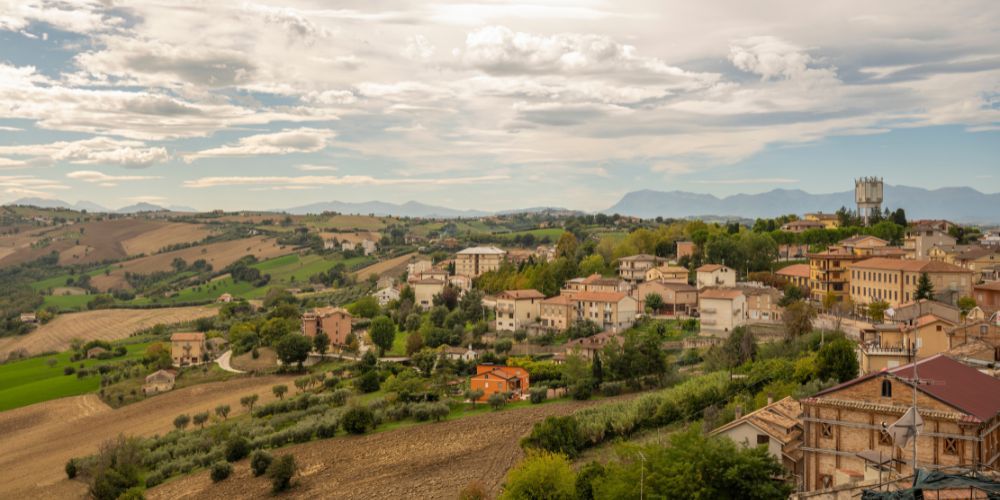
In central Italy, in the south of the Marche region and nestled between the Sibillini Mountains and the Adriatic coast, there is a territory of authentic, rare and multifaceted beauty. It is the Marca Fermana, which constitutes the province of Fermo, a city about seventy kilometers south of Ancona.
The area in itself not particularly large, is however truly rich in attractions. The landscape varies from the mountains, to the sea, passing through hills and vast fields. In addition to the beautiful Fermo, rich in art and history, there are small and large villages to visit, archaeological sites, churches and museums.
This is where Monte San Pietrangeli is located, the charming village surrounded by hills about twenty kilometers north of Fermo, in the hinterland but still not far from the easily reachable coast.
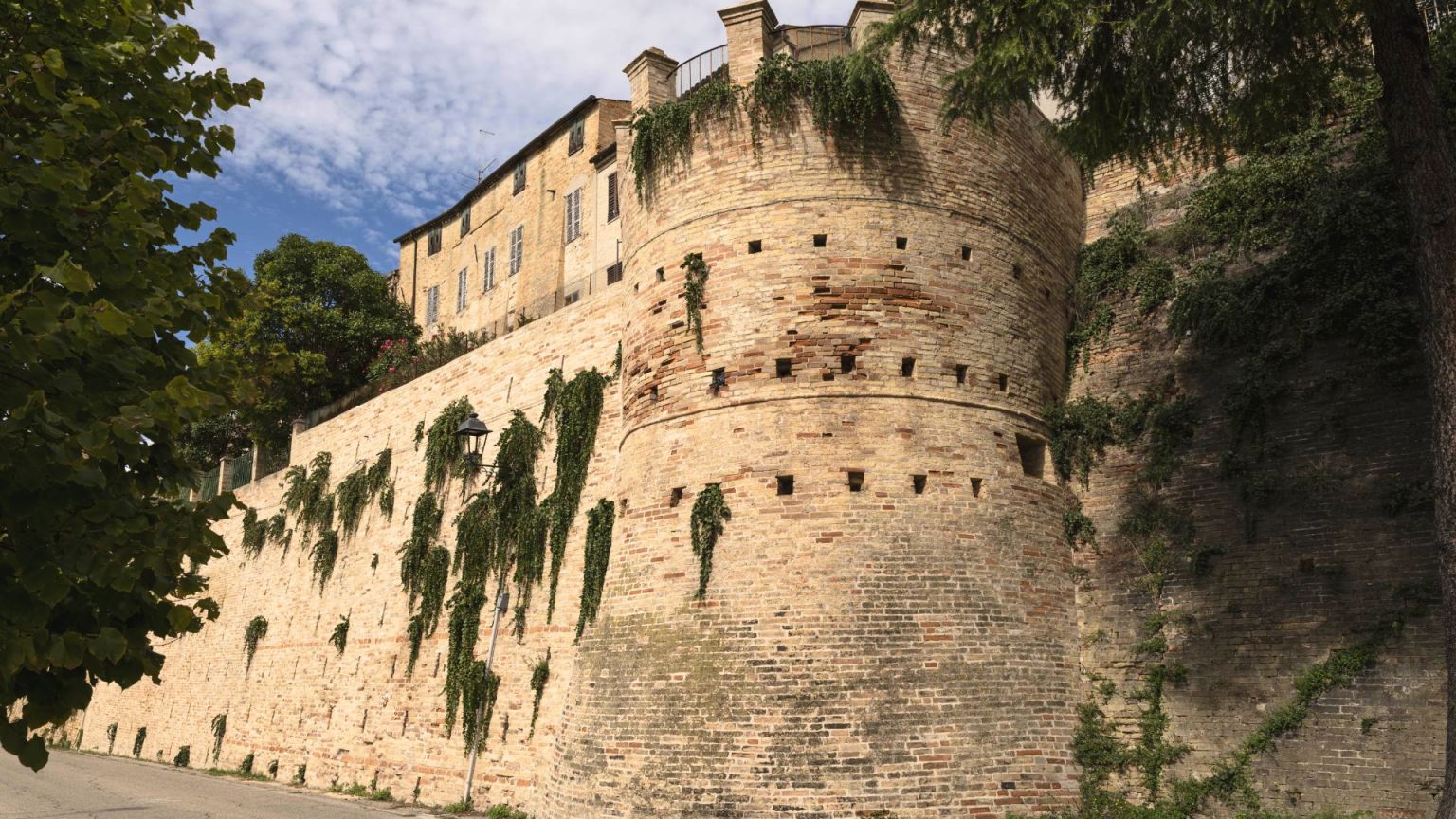

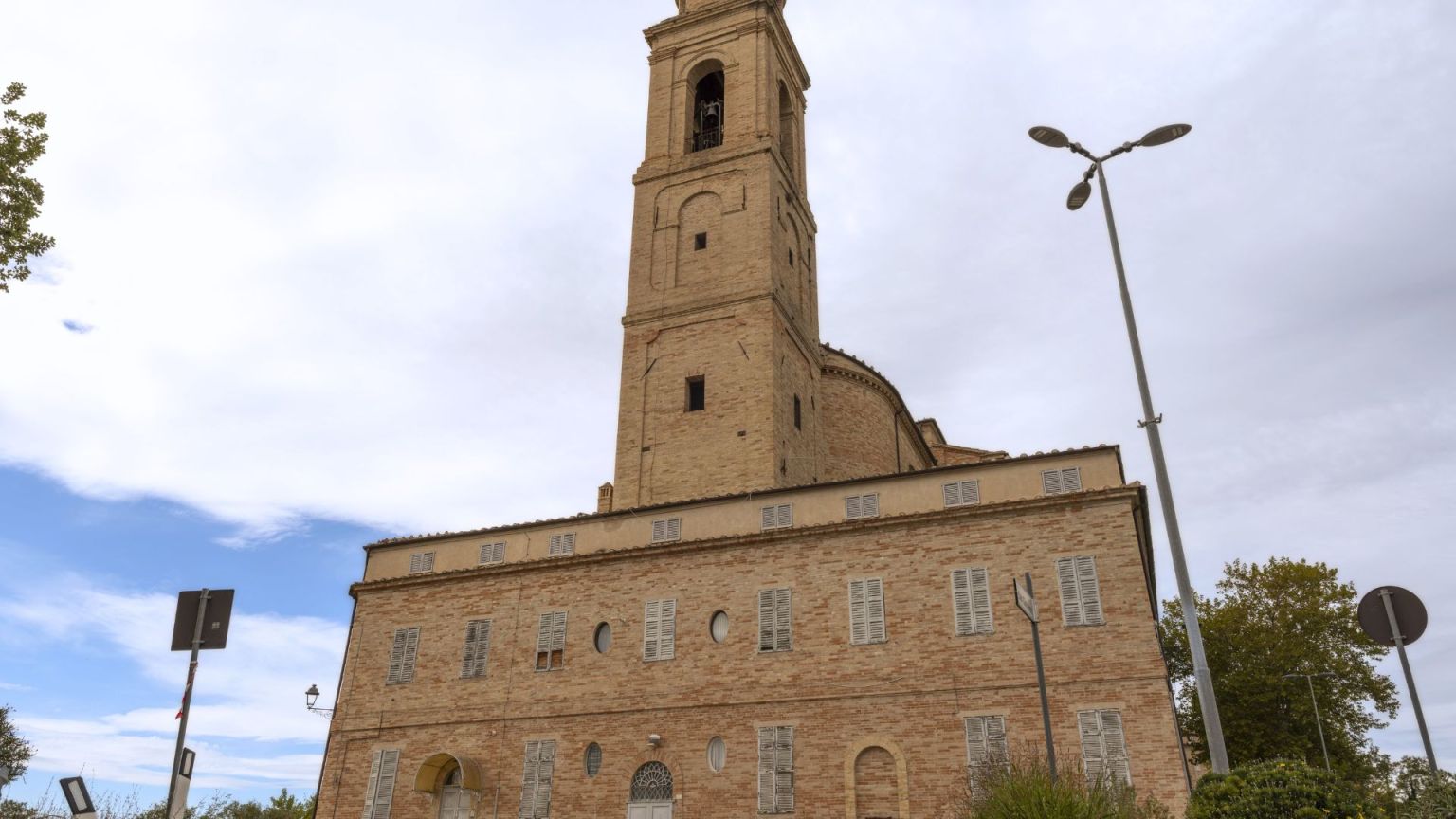

Why visiting Monte San Pietrangeli
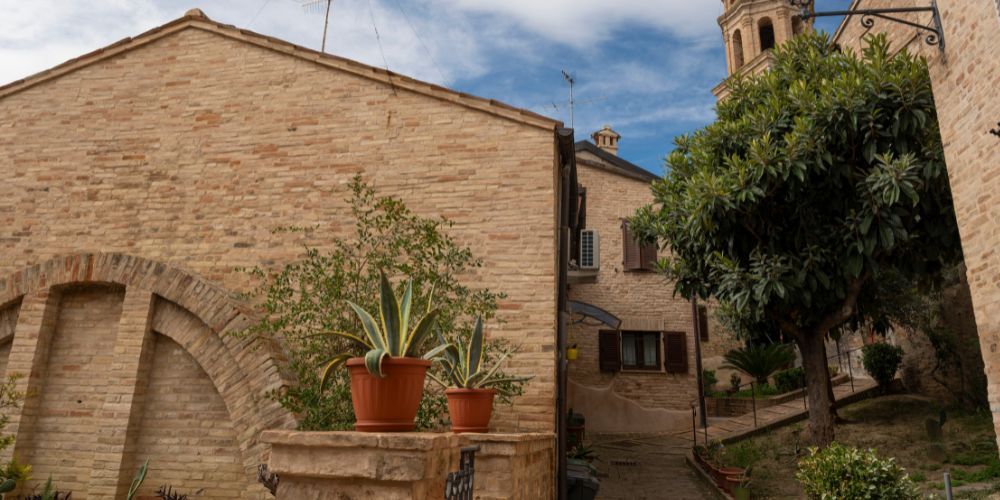
An authentic hidden gem in the green countryside of the Marche, Monte San Pietrangeli has a history that dates back many centuries, starting at the time of the ancient Romans, and then continuing in the Middle Ages with the actual foundation of the village, and further enriching itself during the sixteenth century. The traces of this rich past are still clearly visible today and make the historic center a continuous discovery.
Visiting Monte San Pietrangeli is an experience to do at least once to come into contact with this ancient world and admire its architectural beauties, to enjoy the quality of life and the possibility of exploring a region as rich as ever in destinations and itineraries, among the rolling hills and boundless fields. A visit to Monte San Pietrangeli, moreover, will also allow you to have fun by participating in the many cultural events that come to life thanks to a community full of positive energy and eager to face the future.
Explore Monte San Pietrangeli and the nearby villages with this tourMonte San Pietrangeli: the history of the rebel village
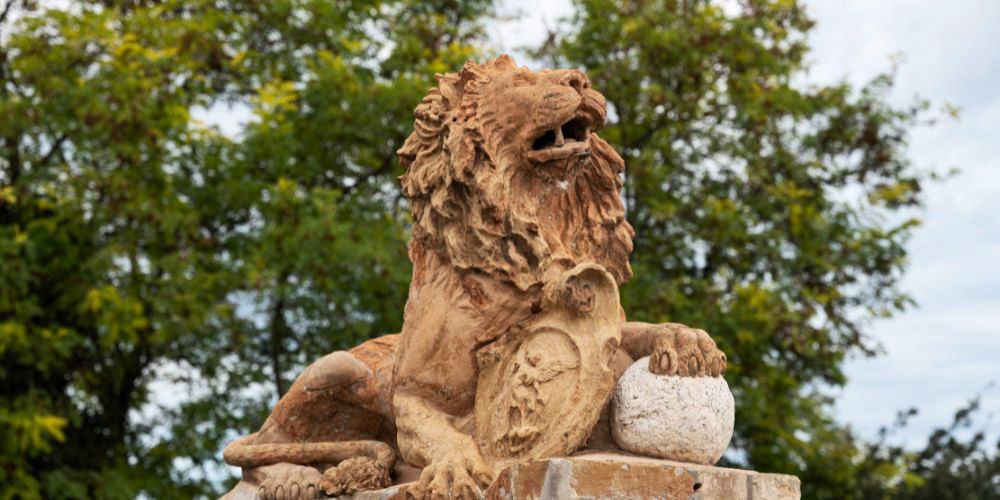
Thanks to archaeological finds, it is known for certain that the area of Monte San Pietrangeli was already inhabited at the time of ancient Rome. The actual village, however, has medieval origins. It was founded in 1080 by Benedictine monks, but the historic center, as we can see it today, is from the Renaissance period.
During the Middle Ages, when the small village was still called Monte San Pietro degli Agli, the territory was enriched with towers and defensive walls and had the pride of being the only municipality in the province of Fermo to resist first the siege of Francesco Sforza, lord of Milan, in 1443 and then that of the great leader Andrea Doria in 1498.
Another chapter in the valiant history of the village is 1536 when Monte San Pietro degli Agli, which had been sold to Fermo, rebelled with the help of the troops of Pope Paul III, destroying the new fortress, symbol of the tyranny of Fermo.
On September 29, 1537, the day in which the archangels were celebrated, the village, which had passed directly under the jurisdiction of the church, also changed its name, becoming Monte San Pietro degli Angeli.
What to see in Monte San Pietrangeli
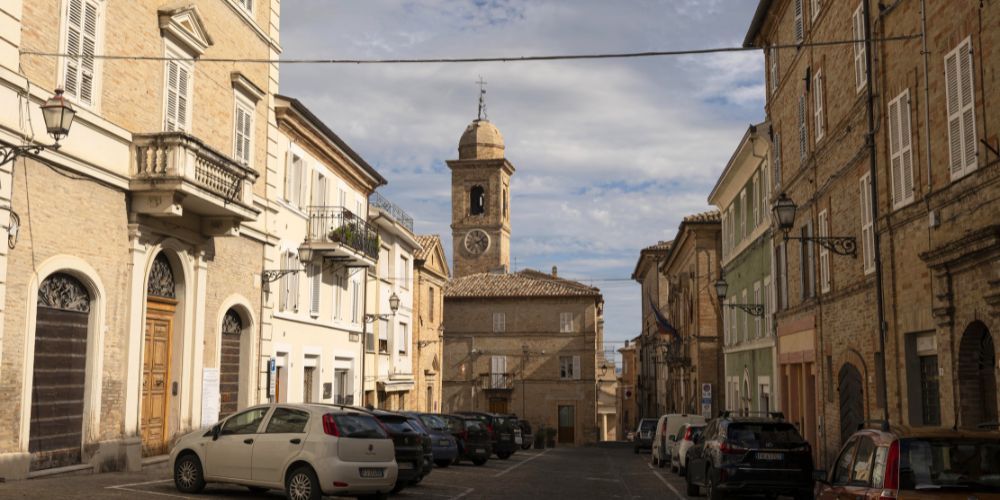
The historic center of Monte San Pietrangeli boasts many centuries of life but what we see today is mostly the result of a sixteenth-century urban plan. Situated on top of a hill, it has a strongly elongated elliptical plan, with a fourteenth-century wall and the gates, Bora and Sole, joined by a road that cuts through the main street, Via Roma.
Walking along the main and the secondary streets you can't fail to come across the two most important buildings, the monastery of San Francesco and the collegiate church of San Lorenzo and San Biagio, which basically open and close the center. You will also notice several Renaissance buildings that belonged to the noble families of the village.
While visiting Monte San Pietrangeli you will certainly also stop to admire awesome views of the surrounding hills. Let yourself be enchanted by the wonderful panorama and then head towards the main square, Piazza Umberto, and towards some of the most important buildings: the Palazzo del Preposto, the Civic Tower which survived the clashes of 1563 and the eighteenth-century Palazzo Comunale.
Visit the churches of Monte San Pietrangeli: the collegiate church of San Lorenzo and San Biagio

In the rich architectural heritage of Monte San Pietrangeli, the numerous churches stand out. Among the most beautiful and important neoclassical churches in the entire region, the Collegiate Church of San Lorenzo and San Biagio dominates with its imposing mass and the terracotta lions that guard the entrance to the historic center.
The church, in fact, was designed by Giuseppe Valadier just outside the walls, since the space inside was not sufficient. Consecrated in 1859, it has a façade with a pronaos characterized by the Doric colonnade and overlooks Monte San Pietrangeli, while at the back the elegant forty-four meter high bell tower dominates the valley. Inside there are three naves with several works by one of the greatest native artists of the place, Luigi Fontana.
Monte San Pietrangeli and the Monastery of San Francesco
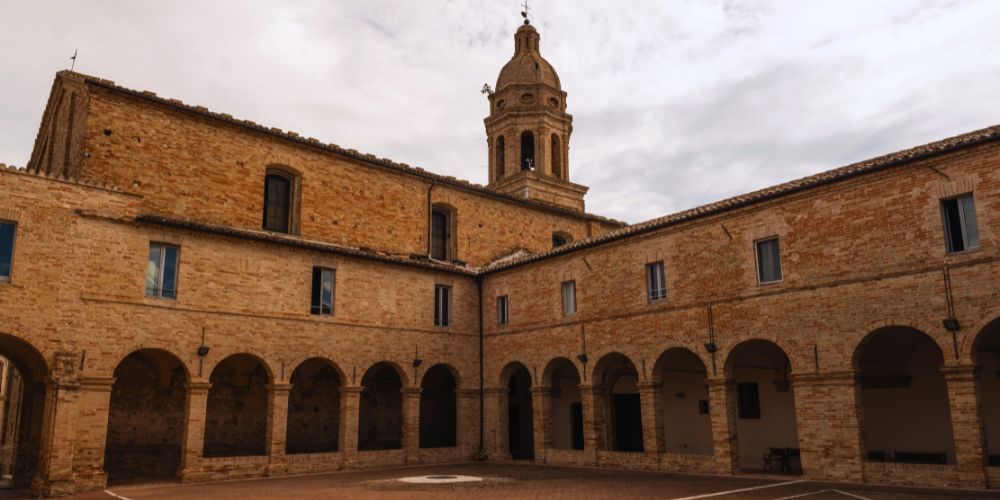
A visit to Monte San Pietrangeli cannot fail to include a stop at the convent of San Francesco, a building originally from the 11th century, then involved in the rebellion of 1537 and therefore significantly remodeled, in particular after the works of 1572 and the new consecration in the presence of Pope Sixtus V.
Today we can admire interiors that are largely eighteenth-century, such as the beautiful wooden choir of the apse or the precious organ by Gaetano Callido, a Venetian artist, located above the entrance.
Also not to be missed is a walk in the cloister with porticoes on two sides and the interesting bell tower, a seventeenth-century work by the architect Rosati, which stands out for a tall square-plan building on which a second octagonal-plan body is grafted, surmounted by an elegant dome.
Churches in the surroundings of Monte San Pietrangeli
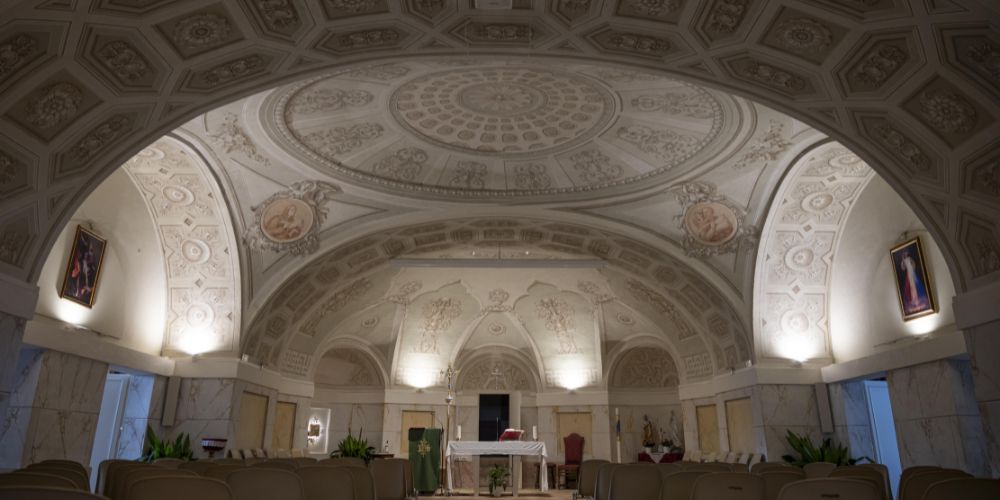
The entire territory of the Fermo countryside is dotted with churches and there are many to see even just outside the walls of Monte San Pietrangeli. An itinerary between Fermo's churches can start already close to the center, where the church of the Madonna dell'Ospedale is located. It's worth visiting because inside you can admire the paintings of another important local artist, Marziali.
In the nearby Rivo district, moreover, there is the small and charming church of the Madonna del Buon Cuore where on September 8th of each year a festival dedicated to the Madonna del Buon Cuore is held.
Also in the San Rustico hamlet, just over three kilometers from the center of Monte San Pietrangeli, you can visit a beautiful eighteenth-century church.
The buildings of Monte San Pietrangeli: the Town Hall
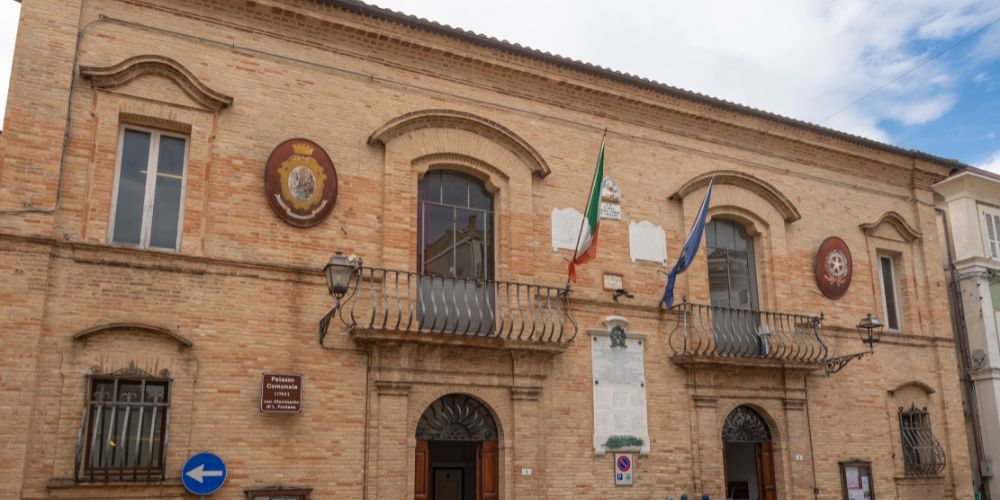
In the historic center of Monte San Pietrangeli there are several civil buildings of historical importance, among which the Palazzo Comunale is among the most interesting, both for the beautiful neo-Renaissance facade renovated by Luigi Fontana, the famous artist born in the village, and for the works kept inside, including the paintings of Quadrini, an 18th century artist, to whom a plaster cast representing the Virgin of the Seven Sorrows is also commonly attributed.
The frescoes by Luigi Fontana embellish the interiors, where you can also admire some papal parchments, an ancient statute dating back to the 15th century and an image of the Madonna del Veneziano.
Also not to be missed is the funerary stone of a standard-bearer of the Roman army, dating back to the 1st century BC and an important testimony to the centuries-old past of the village.
Along the promenade you can also admire other nobiliari palaces, such as Palazzo Spagnoli and Palazzo Barbarossa, just to name a few.
The Civic Tower of Monte San Pietrangeli

If you visit Monte San Pietrangeli you will immediately notice its Civic Tower, one of the most representative monuments, which watches over the historic center. On the four facades of the building, which is accessed through a fourteenth-century portal, you can admire the municipal coat of arms, the two clocks and the sundial.
Inside there is a chapel with fragments of a sixteenth-century fresco by an unknown artist, while on the top there are two bells, the largest of which is an eighteenth-century work on which the patron saints of the village are depicted.
Above everything is an octagonal dome on which a cross is mounted.
The San Giovanni Cultural Center
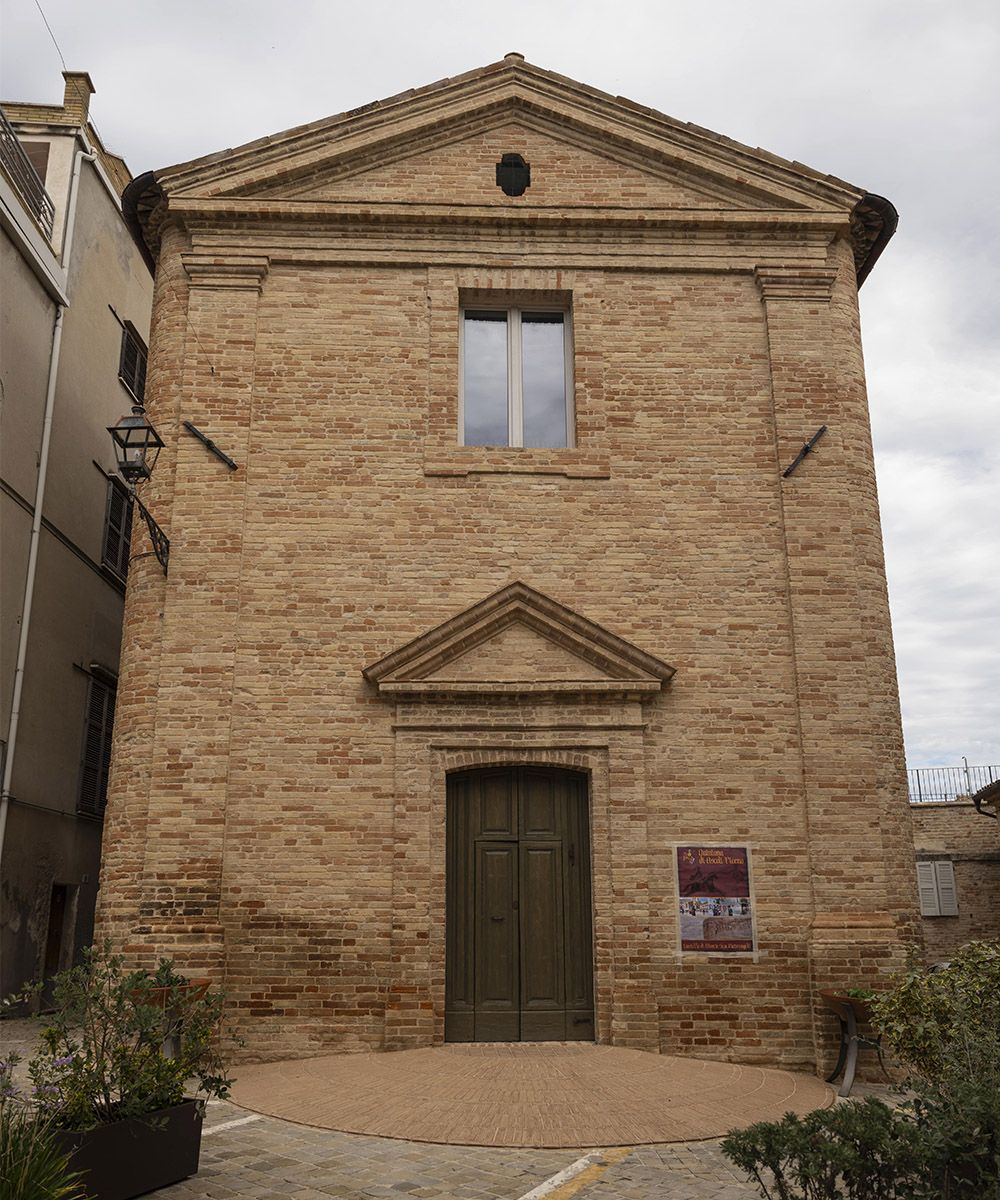
The San Giovanni Cultural Center, which is also an art gallery and auditorium, is located in Piazza Umberto I and was built on the site of an ancient church. In addition to hosting exhibitions and events, it temporarily houses a 16th-century polyptych.
The work attributed to Giuliano da Fano, a great artist of the Perugino school, was originally commissioned to Crivelli, a Venetian artist, who was responsible for the initial design. It is one of the most beautiful and important works of art preserved in Monte San Pietrangeli.
Visit Monte San Pietrangeli and its surroundings
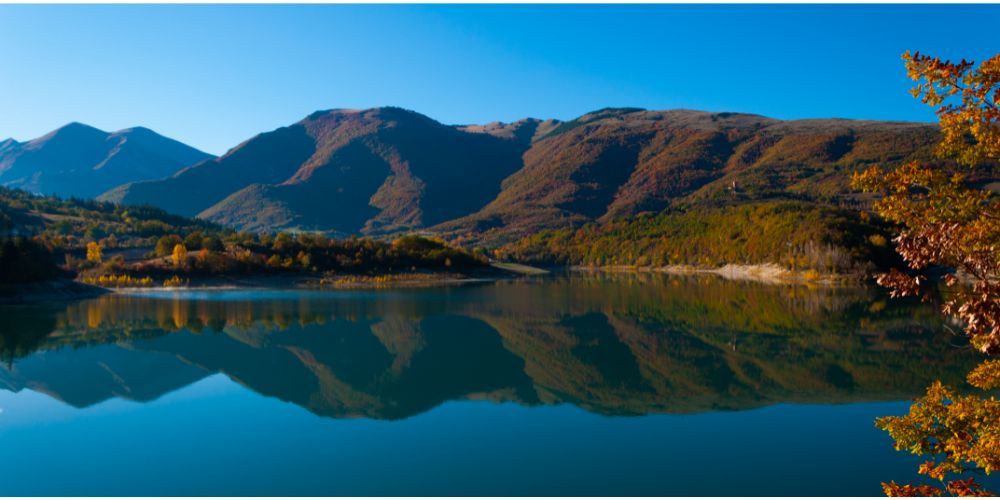
All around Monte San Pietrangeli there is a territory truly rich in places to visit, full of everything you could wish for. The rolling hills that surround the village, for example, are perfect for expert cycle tourists or lovers of simple bike rides.
The beautiful Sibillini mountains park can be reached in about forty-five minutes by car, while the coast is even closer, reachable in less than half an hour. Here you can visit various places, such as the pretty village of Pedaso, on the seashore and at the foot of panoramic hills. Beautiful beaches, restaurants, shops await you in the lively Civitanova, and also in Porto Sant’Elpidio you will find beautiful villas, cycle paths, parks for children and seven kilometers of wonderful beaches.
If you visit Monte San Pietrangeli also treat yourself to an excursion to Lake Fiastra, where you can play sports or dedicate yourself to total relax, around fifty kilometers away. Even closer, about twenty kilometers far, there's another jewel of art and nature, the Fiastra Abbey with the nature reserve. Once owned by Cistercian monks, this area is an oasis of peace where the work of man integrates perfectly with the environment. Here you can visit several museums, go for walks and picnics and of course see the magnificent Chiaravalle di Fiastra Abbey, still inhabited by monks and almost completely unchanged over the centuries.
A visit to nearby Fermo is a great way to spend a day dedicated to art. Just twelve kilometers from Monte San Pietrangeli you will have the opportunity to visit churches, palaces and museums, but in reality the entire area is full of small and large villages to discover. Among these, to name one, there is Sarnano with its suggestive historic center.
Monte San Pietrangeli: what to eat

Zero-mile products, homemade pasta, organic crops and fine meats. A visit to Monte San Pietrangeli is also a full immersion in the rich culinary tradition of the Marche region. Caciù de fava, large, delicious ravioli filled with eggs and pecorino cheese, are among the cornerstones of the local cuisine. Also worth trying is the pig's trotter in porchetta and to finish on a sweet note there is lu serpe, a delicious dessert typical of the Christmas period, made with shortcrust pastry and chocolate. These are just some of the typical specialties of the village, where you can taste all the best of regional cuisine.
Some examples? Cod with potatoes, beans with pork rinds, cannoli, and then many tasty cured meats and cheeses, not to mention the quality of the meats to be roasted. A basically endless list of delights awaits you in Monte San Pietrangeli, all prepared according to traditional recipes and with locally sourced ingredients.
What to do in Monte San Pietrangeli: festivals and events

Anyone who thinks that life in a small village is slow and monotonous is wrong, at least in the case of Monte San Pietrangeli. The local community is active, united and welcoming, and through a large number of associations it often organizes sporting, religious, charity events and so on. At the end of June there is an evocative festival with a historical reconstruction of a medieval setting: it is the Palio di San Pietro, which culminates with the burning of the Civic Tower that recalls the violent clashes with Fermo.
Among the most important and fun events in the Monte San Pietrangeli calendar there is also the Birra e Rock Fest held in August, with a gathering of motorcyclists. From July to December there is a long musical festival dedicated to bands. The Corpo Bandistico Cittadino is the protagonist of the concerts held on the last Saturday of July and the last Saturday before Christmas.The summer ends with the festival dedicated to the Madonna del Buoncuore, on the first Sunday of September, while to inaugurate autumn there is Divina Harmonia, an event dedicated to local wines and specialties that takes place on the last Saturday of September. To warm up the winter, on February 3 of each year, there is the festival of San Biagio with the festival of caciù de fava and other typical sweets.
Furthermore, as in many Italian municipalities, on Good Friday in Monte San Pietrangeli too, a procession is organized with the re-enactment of the passion of Jesus. It is an important and evocative occasion in which more than two hundred and fifty local figures participate.
How to get to Monte San Pietrangeli
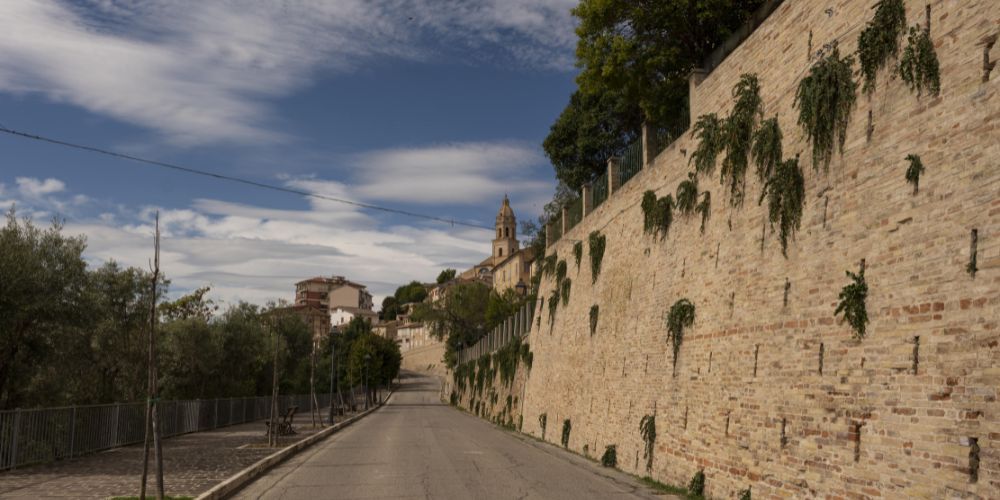
To visit Monte San Pietrangeli the best solution is travelling by car. If you arrive from the north, take the A14, exit at Civitanova Marche and continue towards Monte San Giusto. If you arrive from the south, take the A14 and exit at Fermo-Porto San Giorgio and then continue towards Rapagnano.
You could also decide to travel by bus. From Fermo there are three daily trips lasting half an hour. Alternatively, a taxi ride, also from Fermo, lasts only about twenty minutes.
Living in Monte San Pietrangeli
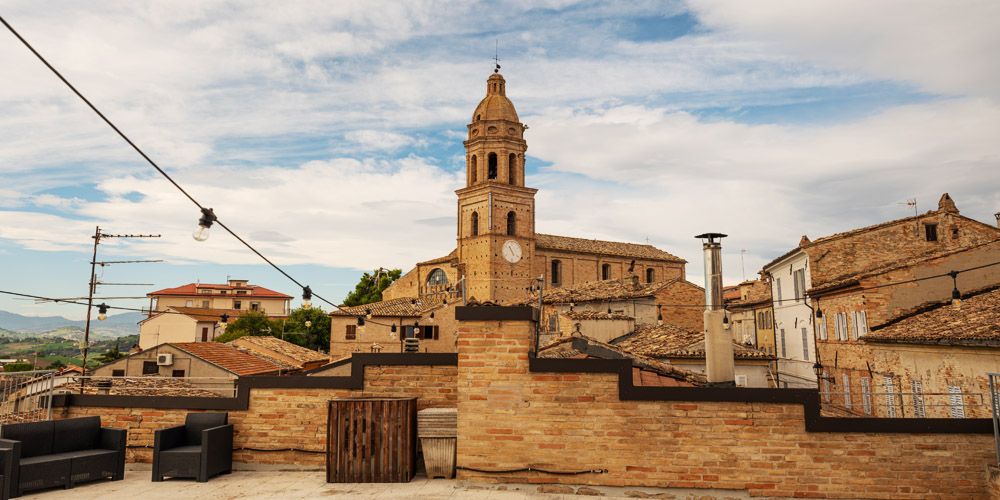
If you have ever dreamed of living in a place on a human scale, among welcoming people, where the quality of life is higher than average, Monte San Pietrangeli could be the place to stay for more than a few days as a simple tourist.
Among enchanting landscapes, close to both the mountains and the sea and even larger cities including the main city Fermo, this village has an active cultural and entrepreneurial life. As evidence of this, there are for example the many activities present in the area linked to the world of craftsmanship, food and wine and hospitality, which combine with the proximity to one of the largest footwear districts in Italy.
For this reason, Monte San Pietrangeli does not fail to tempt digital nomads, for example, and in general anyone who wants a long stay in a territory that regenerates the body and mind because it is ancient and modern at the same time, and has never lost its authenticity, can feel at home here.




